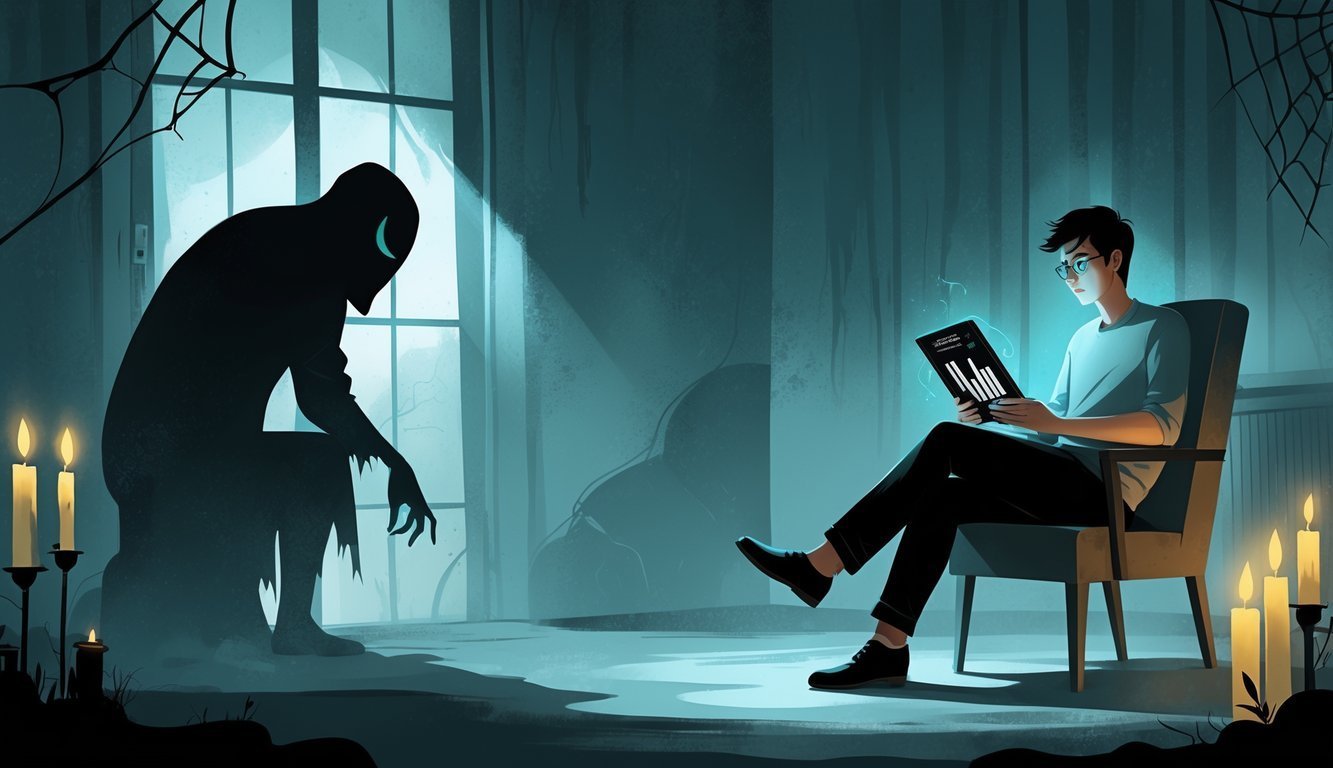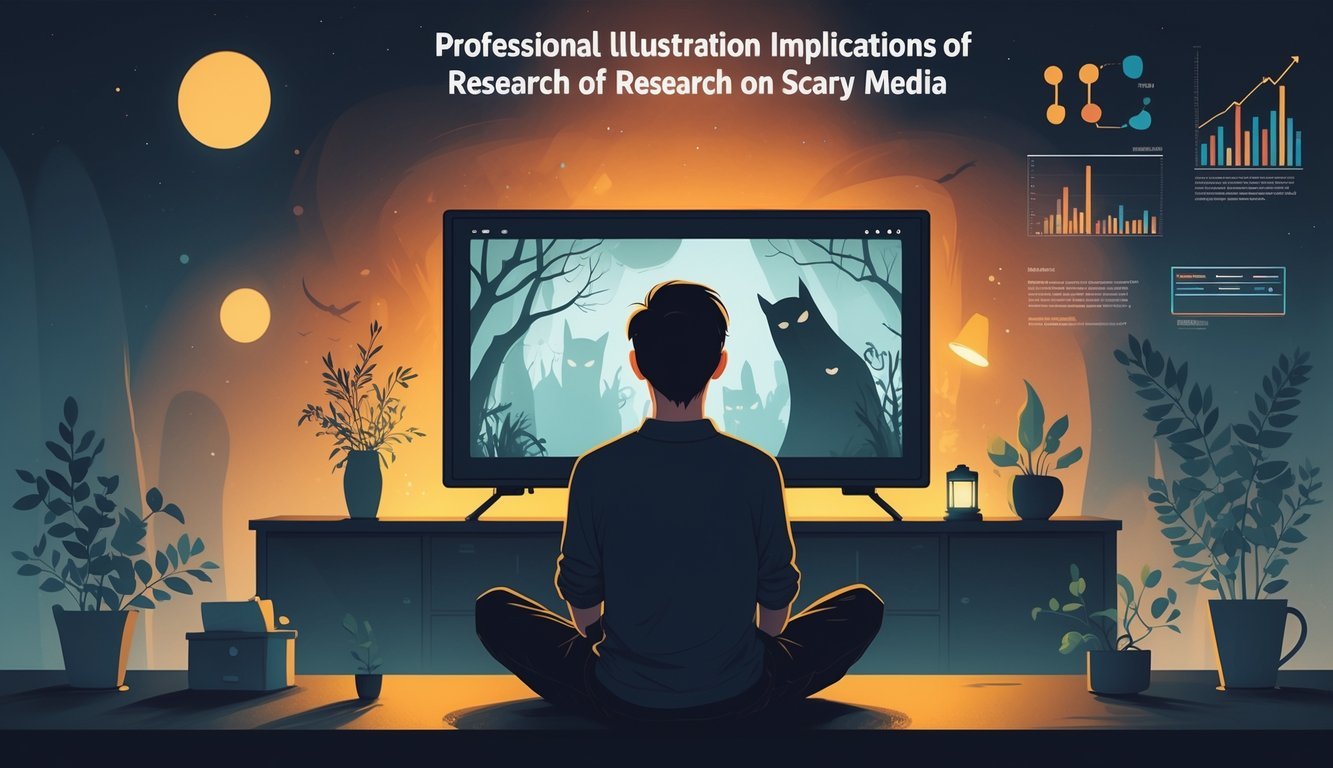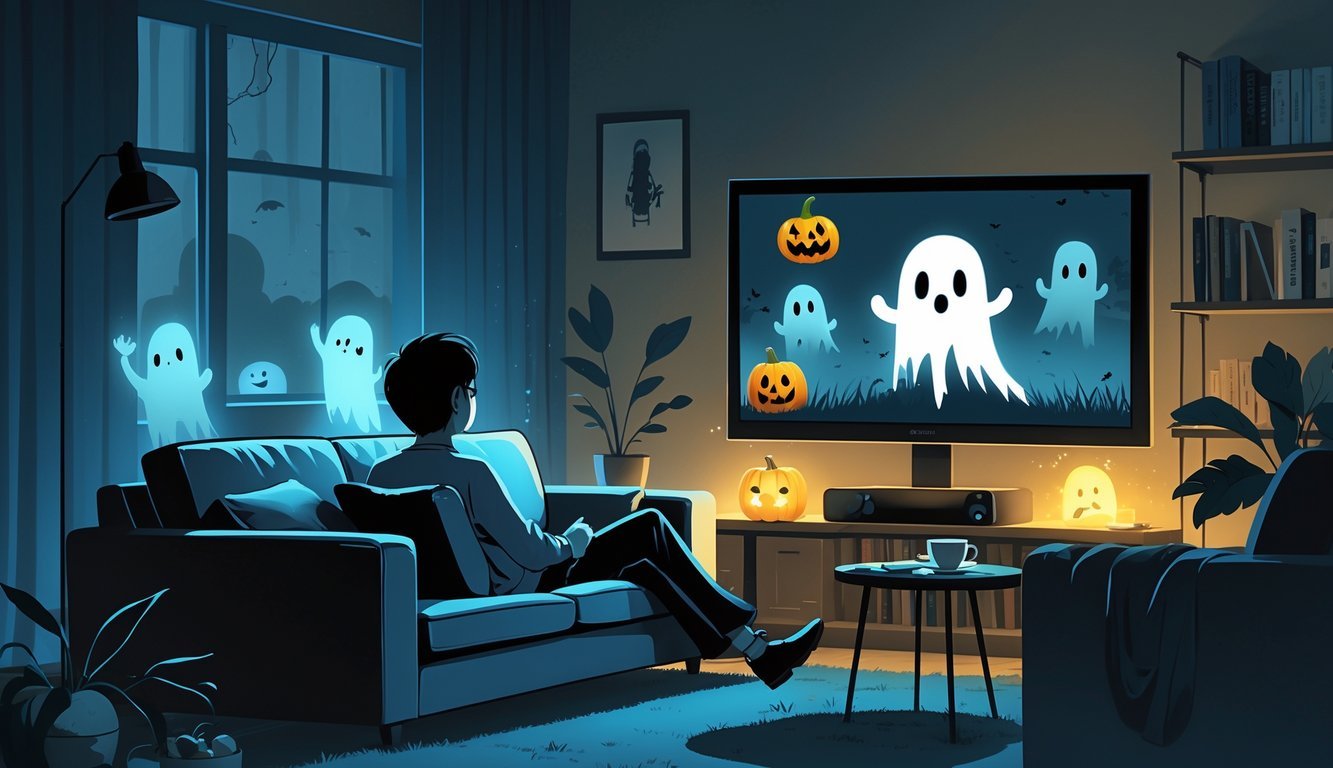PsychNewsDaily Publishers
100 Summit Drive
Burlington, MA, 01803
Telephone: (320) 349-2484
PsychNewsDaily Publishers
100 Summit Drive
Burlington, MA, 01803
Telephone: (320) 349-2484
Horror movies provide an optimal thrill when the fear level is exciting yet manageable, enhancing enjoyment while minimizing stress and discomfort for viewers.

Horror movies and stories can be a rush, but let’s face it—not everyone loves being terrified out of their mind. A new study just found where horror hits that perfect balance between scary and actually enjoyable.
The “sweet spot” for horror happens when it’s scary enough to get your heart racing, but not so intense that you end up stressed or uncomfortable.
Understanding this balance might explain why certain horror films pull you in, while others just make you want to hit “stop.” The research suggests fear can be fun when you control it, letting you face scary stuff in a safe way.
You might not realize how much this sweet spot shapes which horror stories become your favorites. Knowing about it could help you pick scary content that actually matches your taste—and your nerves.

Researchers at Aarhus University found that people enjoy horror films most when there’s a balance between fear and fun. They dug into where that “just right” scary level lands, how surprise and shock play into it, and why some folks crave thrills without wanting to feel overwhelmed.
The “Goldilocks zone” basically means a scare level that’s not too weak and not too intense. The study found that horror movies are most enjoyable when they stick to this middle ground.
If something’s too scary, you feel stressed or just want to walk away. Too mild, and you probably get bored.
This zone shifts from person to person, but it usually means a scare that makes your heart pound without crossing into real panic. The best horror films keep you tense, but not miserable.
Researchers asked participants to rate how scared they felt during horror scenes. They looked for those moments where fear peaked but never got out of hand.
“Scary but not too scary” means you get the thrill without actual distress. Your brain gets a dose of adrenaline and pleasure, but you still know you’re safe.
The study found that your brain rewards this sweet spot by releasing dopamine, which feels good. Maybe that’s why you keep coming back for more horror.
Recreational fear happens when you choose to get scared—like watching a horror flick or walking through a haunted house—knowing you’re not really in danger.
Your brain sees this as exciting, not life-threatening. The Recreational Fear Lab found that controlled fear can lead to catharsis, so you feel better after letting out those emotions.
Your body might react with a faster heartbeat or sweaty palms, but your mind stays calm enough to enjoy the experience.
Surprise and jump scares are classic tools in horror movies. They keep you alert and spike your fear fast.
The study says these sudden moments can shoot up your heart rate and make you jump. Used well, they add to the thrill without ruining the fun.
If movies use too many jump scares, though, they start to feel cheap or just too much. The best horror directors mix slow tension with sudden shocks, so you stay hooked but not exhausted.
By keeping surprise and tension in check, filmmakers can hit that perfect scare level.

Ever wonder why people pay to be scared, or why safe fear can actually help your mind? This research sheds light on why haunted houses and scary movies are so popular, and how playing with fear might help your brain handle stress better.
It also hints at how finding your own fear limit could ease anxiety, and maybe explains why Halloween frights never get old.
Haunted houses and scary movies are fun because they scare you just enough. That sweet spot keeps you hooked without making you miserable.
When fear feels right, your brain pumps out adrenaline and dopamine, which gives you a rush. Haunted houses let you face fear in a safe way—you know it’s not real, so it feels more exciting than dangerous.
Scary movies work the same way. You get the thrills, but you’re still safe on your couch.
Playing with fear actually helps you build resilience. When you watch or experience scary things, your brain learns to handle stress better.
Facing fear in controlled settings, like haunted houses or horror movies, trains your body’s stress response. Over time, this can help you stay calm when something scary or stressful happens in real life.
It’s kind of like giving your mind a workout for handling anxiety.
If you tend to get anxious, knowing your scare limit matters. Too much fear can make anxiety worse, not better.
The research shows that hitting a “sweet spot” gives you excitement without pushing you over the edge. You can manage this by picking scary activities that fit your comfort zone.
Maybe try a mild haunted house or a scary movie with breaks, instead of something super intense. That way, you get the fun without regret.
Halloween brings out everyone’s curiosity about fear. You see creepy decorations or haunted houses, and something in you wants to check them out.
It’s natural to want to explore scary things in a safe way. Halloween events let you play with fear, knowing it’s all pretend.
Your brain enjoys the challenge of figuring out what’s real and what’s fake. That mix of curiosity and fear keeps Halloween interesting year after year.

Horror films can help you manage fear in safe ways and might even boost your empathy. Understanding how much fear is “just right,” and why some people love horror even if it freaks them out, could change the way you watch these movies.
Watching horror movies lets you face fear in a safe space. Over time, this can help reduce anxiety and make it easier to deal with stress.
It’s also a way to explore tough feelings without real danger.
Definitely. Seeing characters in danger or pain can make you feel what they feel, which might boost your empathy in real life.
You know you’ve hit the right balance when the fear feels exciting but not overwhelming. If it gets too scary, you might shut down or want to stop watching.
The “sweet spot” keeps you interested and entertained, not stressed out.
Movies like The Conjuring, Insidious, and A Quiet Place are famous for well-timed jump scares. They surprise you without overdoing it, which keeps those moments effective.
You might like the mix of excitement and relief once the scary part ends. Sometimes, the thrill is worth it—even if you jump out of your seat.
It’s also a way to test your limits in a safe place.
People who love horror usually crave new experiences. They often chase thrills and don’t mind a little adrenaline.
Some enjoy picking apart puzzles or digging into the deeper meanings behind fear. Maybe it’s curiosity, or maybe it’s just a weird comfort with suspense—either way, it’s an interesting mix.